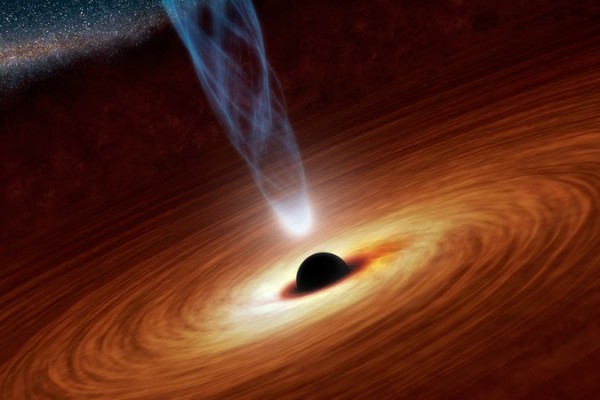Astronomers have discovered a massive black hole within the Milky Way galaxy, which is 33 times the mass of the Sun, making it the largest stellar black hole found in the galaxy to date. The astronomers have expressed that this discovery came as a surprise and can be considered a significant finding.
Black holes are incredibly dense objects with such strong gravitational pull that even light cannot escape, making them challenging to detect. This stellar black hole, named Gaia BH3, was serendipitously discovered from data collected by the European Space Agency’s Gaia mission. Launched in 2013, the telescope aims to create a 3D map of one billion stars.
This discovery is crucial, leading scientists to release the details of the black hole early so that other astronomers can conduct further observations promptly.
“This is completely unexpected,” said Dr. Pasquale Panuzzo, an astronomer and member of the Gaia collaboration at the Paris Observatory. “It is the most massive stellar-origin black hole in our galaxy and the second closest black hole discovered so far.”
When massive stars collapse at the end of their lives, they form stellar black holes. Dozens of such black holes have been found in the Milky Way, with most weighing about 10 times the mass of the Sun. Dr. Panuzzo added, “This black hole not only has a very large mass but is also very peculiar in many respects. This is truly something we had never anticipated.”
The most impressive black hole in the Milky Way is Sagittarius A*, whose total mass is equivalent to millions of Suns. It lurks at the galaxy’s center and formed from the collapse of massive dust and gas clouds, rather than through explosion.
Gaia BH3 lies in the constellation Aquila, 2000 light-years away from Earth. As researchers examined Gaia’s observations, they noticed significant wobbling in a star in Aquila, indicating that the star was being influenced by a black hole 33 times the mass of the Sun.
Further observations from the European Southern Observatory’s Very Large Telescope in the Atacama Desert of Chile confirmed the mass of BH3 and the star’s orbit around it, circling the black hole every 11.6 years. “Only the black hole at the center of the galaxy surpasses this one in mass,” Panuzzo said.
“No one expected to find such a massive stellar-origin black hole lurking nearby that had not been discovered until now. This can be considered a once-in-a-lifetime significant discovery in one’s research career,” remarked Panuzzo.
The mass of Gaia BH3 far exceeds the existing stellar black holes in the Milky Way, but it shares similarities with some black holes revealed by gravitational waves or spacetime ripples, generated when black holes collide in distant galaxies.
“We have only seen black holes of this mass with gravitational waves in distant galaxies,” Panuzzo said. “This allows us to see a connection between the stellar black holes in our galaxy and those discovered through gravitational wave detections.”
This research was published in Astronomy & Astrophysics.
There may be millions of stellar black holes in the Milky Way, despite their huge masses and powerful forces, they are difficult to detect. “Most black holes do not have stars orbiting around them, so we can hardly see them,” Panuzzo explained.
Astronomers measured the companion star of BH3 and found no signs indicating contamination from the explosion ejecta of the star that formed the black hole. This discovery suggests that the black hole had already formed before trapping its companion star in its intense gravitational field.
Elizabeth Caffau, an astronomer at the Paris Observatory and a co-author of the study, stated, “The surprising result is that the chemical composition of this companion star did not show any particular conditions, indicating it was not affected by a black hole supernova explosion.”
Scientists are uncertain about the exact size of stellar black holes. “The maximum mass of stellar black holes is an active topic of scientific debate,” Panuzzo said.
(Reference from The Guardian)
Editor: Liu Ying#

